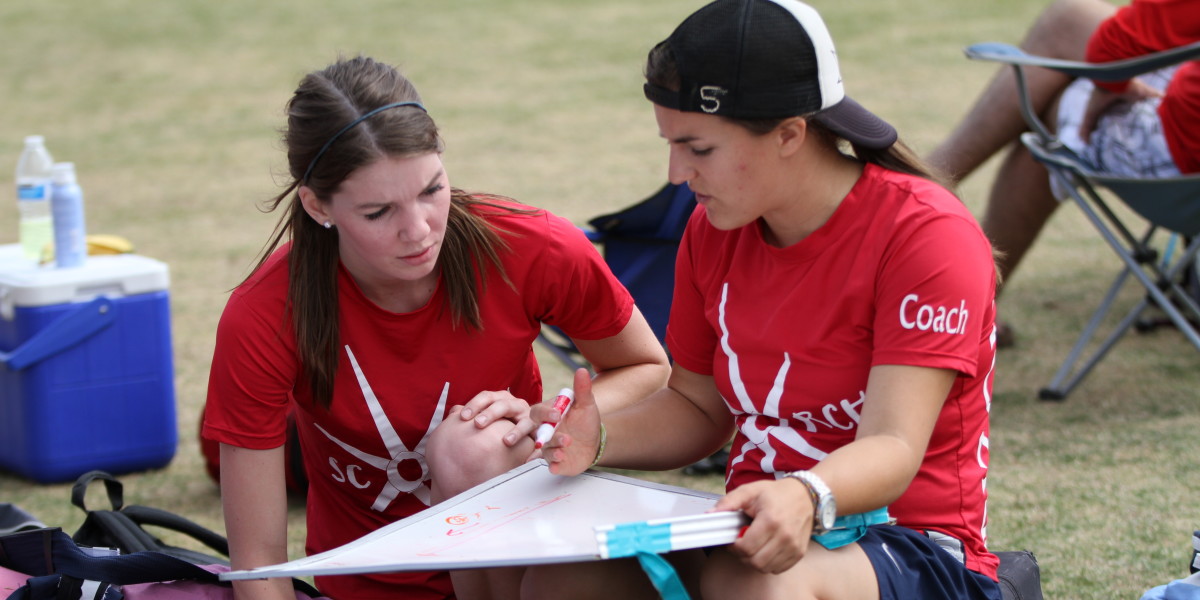
There is a time to be a firm coach and there is a time to be a fun coach, and there is a big gray area in between. Being a good coach is about knowing where to be on that spectrum, and when.
When I started coaching Fever in 2006, I had no identity as a coach. I had captained teams that I played on, and while that included a coaching aspect, much of it was planning and paperwork.
I didn’t know what coaching meant, and I certainly didn’t know what coaching ultimate meant. And I didn’t know that I didn’t know. I only knew what I had seen watching a lot of other sports. I had seen coaches that yelled (what I call “coaching hard”), and I’d seen coaches that seemed calm all of the time (“coaching soft”). But the nuance of those coaching styles was lost on me, especially in terms of coaching ultimate.
Some things I did know
Fever was a small program led by a small core. There had been some coaching leading into the fall of 2006, but I never witnessed what that looked like. And my experience with coaches in ultimate up to that point wasn’t very memorable. The most important thing I did know: I wanted to see this women’s college team grow and thrive, and I wanted to coach.
At the beginning, I attended 50-70% of practices and all the tournaments. I wasn’t a very practiced coach, and since the team was small and retention was an issue, I approached coaching them “softly.” No yelling, no harsh negative consequences for mistakes, and no pushing them to exhaustion. When players repeatedly made the same mistakes, I just repeatedly explained the way to do things better. My fear of scaring everyone away seemed to override the need to push individuals for the betterment of the team.
I do believe “soft” was a necessary evil. Every team, at any level, fights the battle to keep players around. With new players that need a lot of support, running sprints for errant throws or dropped passes definitely seemed like overkill. I felt that it was key to have an encouraging and welcoming environment.
Certainly, there were always individuals who were raring to go and didn’t mind some tough love. They wanted to compete hard and push limits, and they did. But in my early years of coaching, there was a limitation to the level to which the team could achieve.
What I learned
When a team starts to really push toward success – qualifying for Nationals, for example – “hard” coaching is something players start to demand more of. Captains begin calling for mandatory conditioning workouts outside of practice. At practice, players want coaches to be loud and assertive. At tournaments the discussions in the huddle are no longer about just the good things that are happening, but also about the bad things that need to be addressed to win. Players really begin to hold each other accountable. And winning is no longer a nice bonus of playing; it’s of the utmost importance.
Coaching soft versus coaching hard becomes a philosophical issue. A team at any level will have moments that demand being more at one end of the coaching spectrum. It can depend on whether the team is developing in the fall or is in the meat of the spring season. It can vary from practice to practice (focused strategy practice versus fun practice to just let loose) and tournament to tournament (the team is trying to find itself versus trying to qualify for nationals). And the way to coach can depend on the player being approached. Rookies may need more teacher and less drill sergeant. Most returners can handle a little more force and often ignore the fluffy talk.

What I know now
There are more coaches now than ever before. Rarely do I see an uncoached college team at a tournament. When I started coaching, I was still working under the premise that coaching was more of a passive, guiding experience than a yell and stomp your feet experience.
Finding the sweet spot took some time. I still struggle to identify when to coach “soft” and when to coach “hard.” When does a player need me to pat them on the shoulder? When do I get in their face and remind them that effort is a big part of what we do? When does the team need a dance moment? When does the program need an inviting personality versus the competitive face of a fighter? I always look for feedback from team leaders to help determine the place they want the coaches to be. During halftime of a game at Nationals in 2014, I asked a returner what we needed to get energized. “Dance party” was the response. No firm words needed.









Comments Policy: At Skyd, we value all legitimate contributions to the discussion of ultimate. However, please ensure your input is respectful. Hateful, slanderous, or disrespectful comments will be deleted. For grammatical, factual, and typographic errors, instead of leaving a comment, please e-mail our editors directly at editors [at] skydmagazine.com.